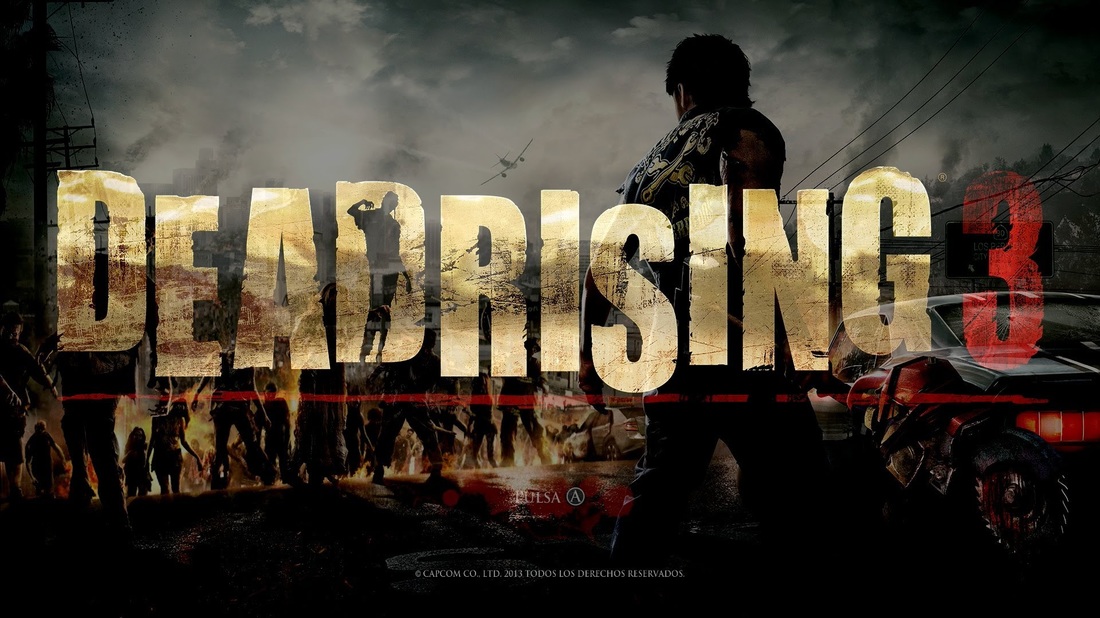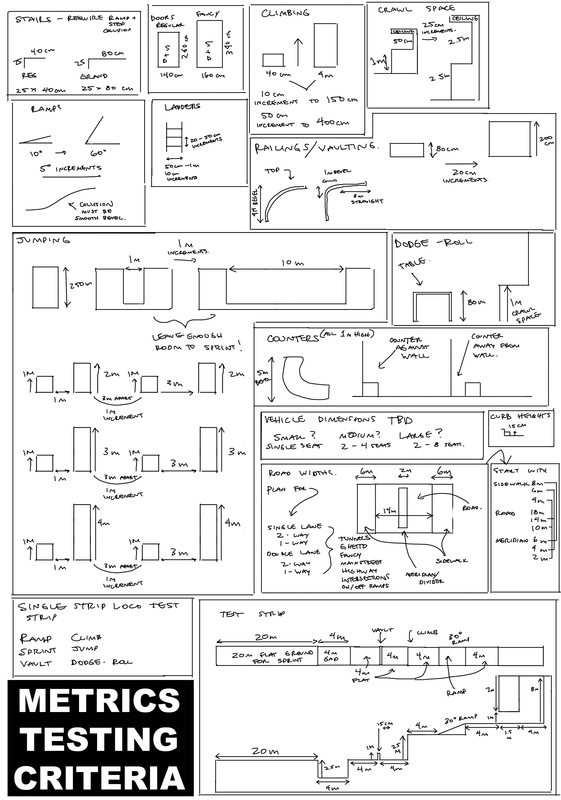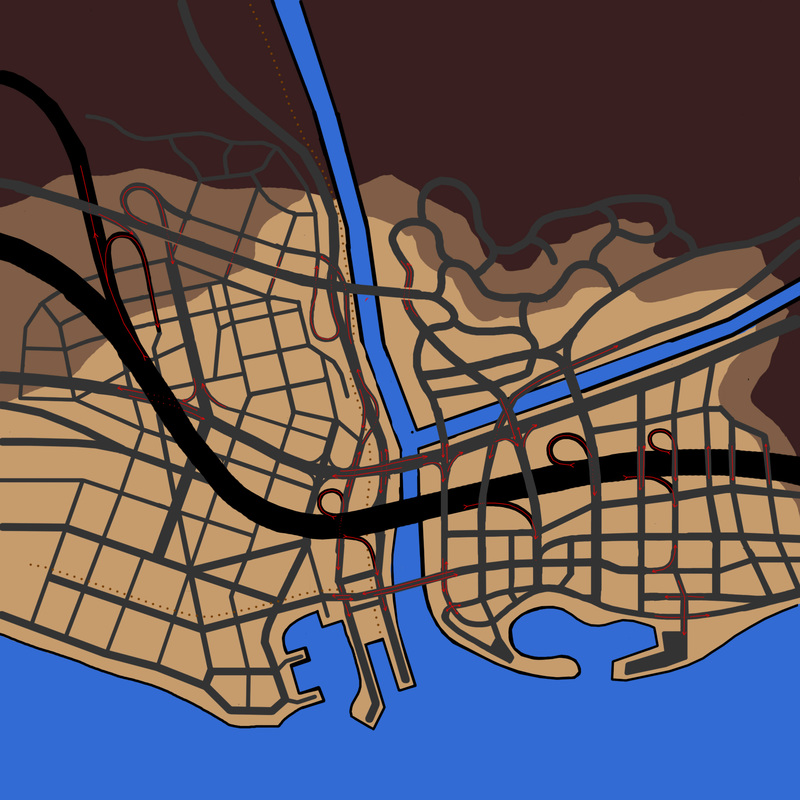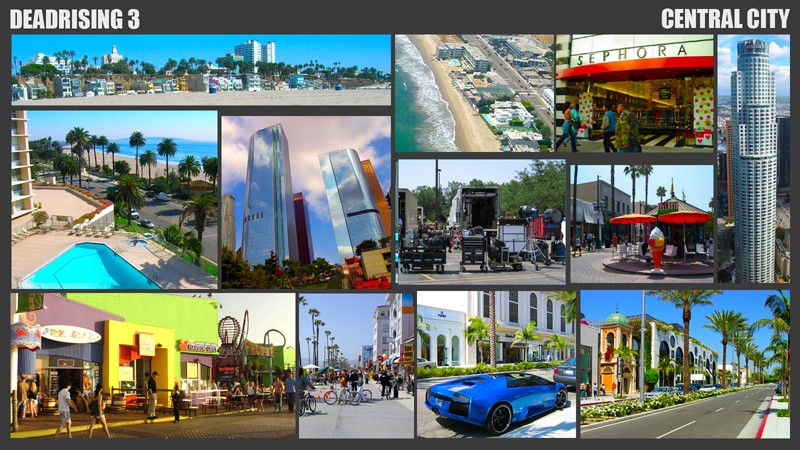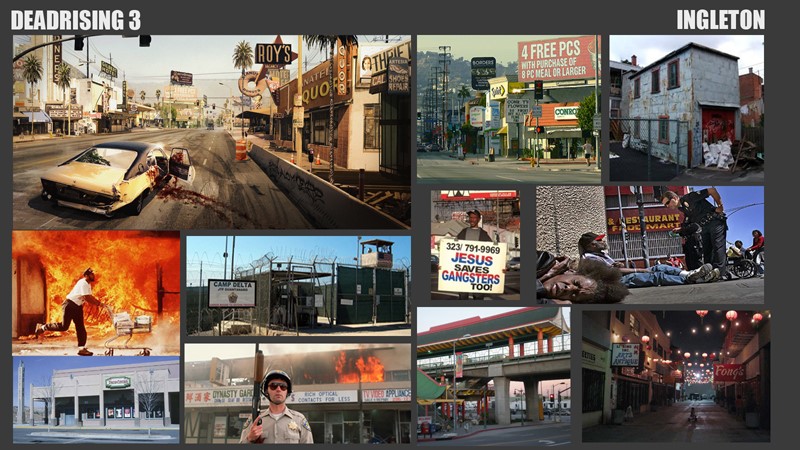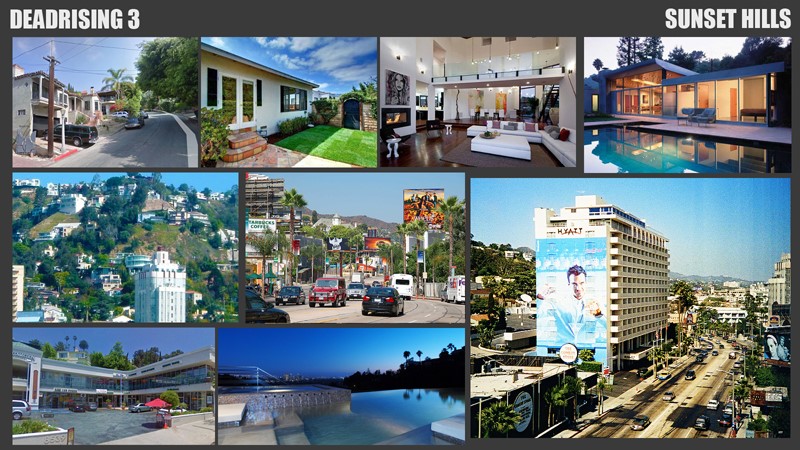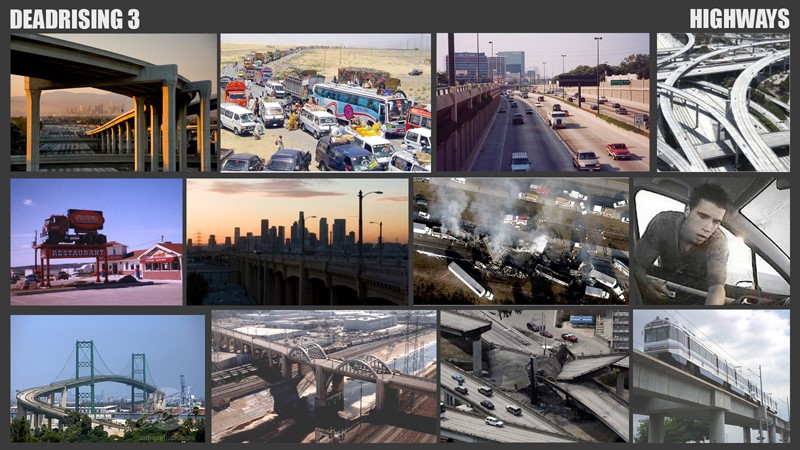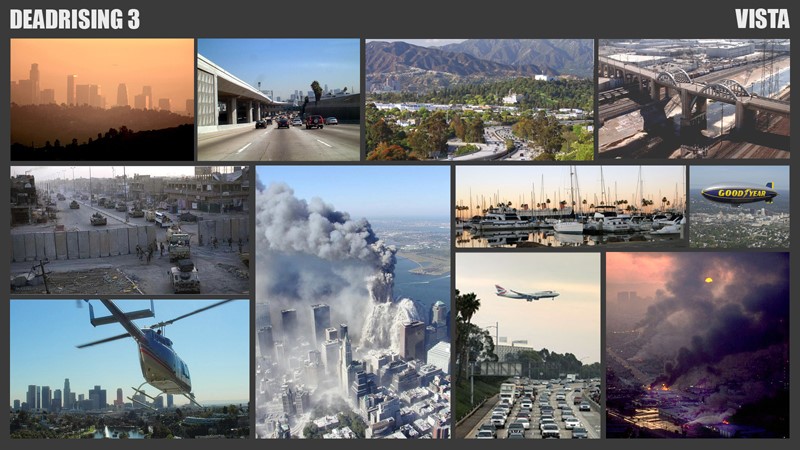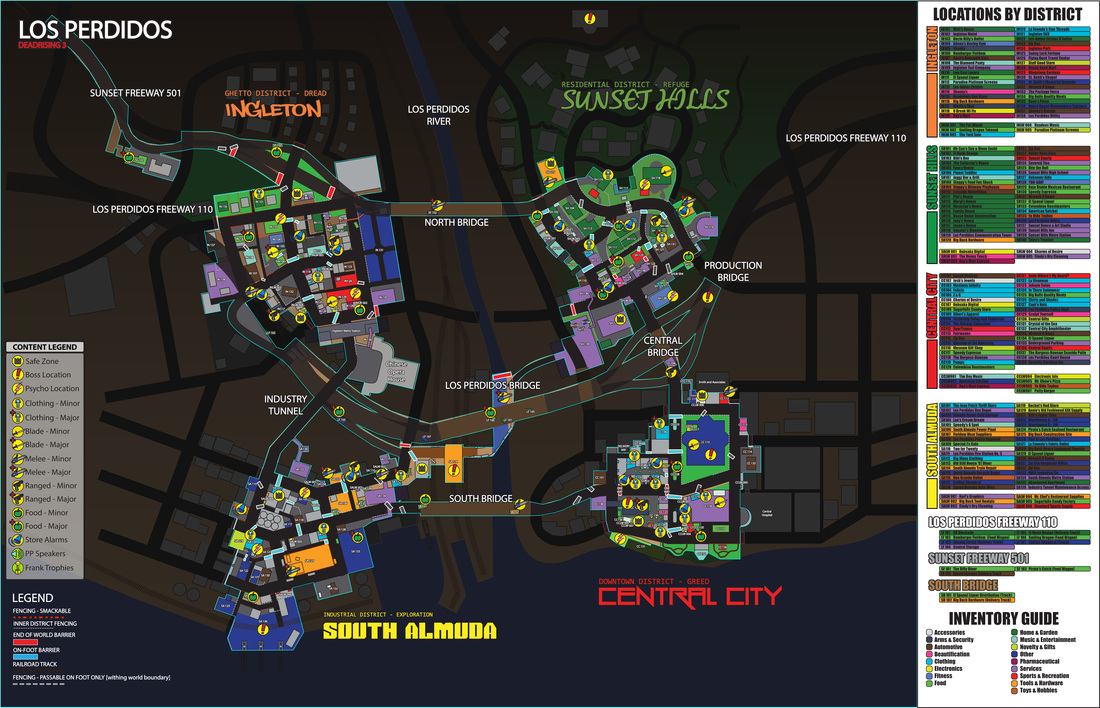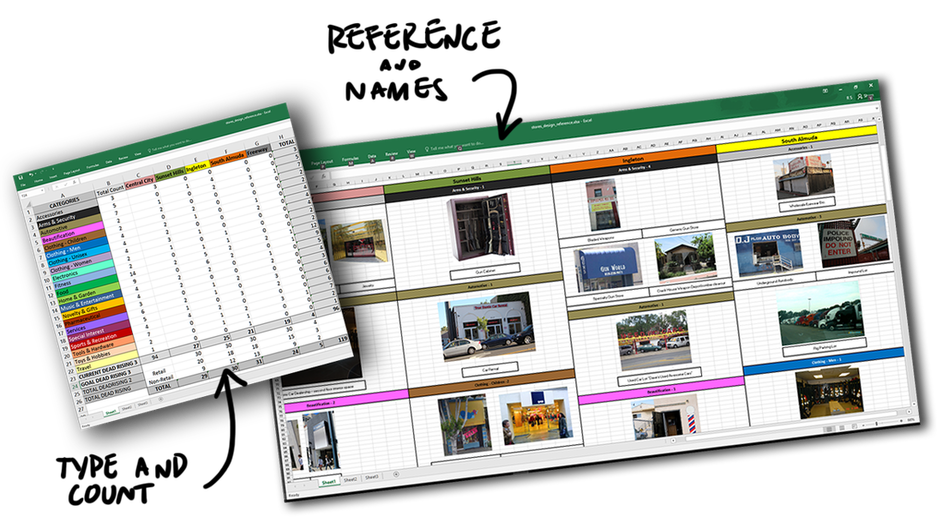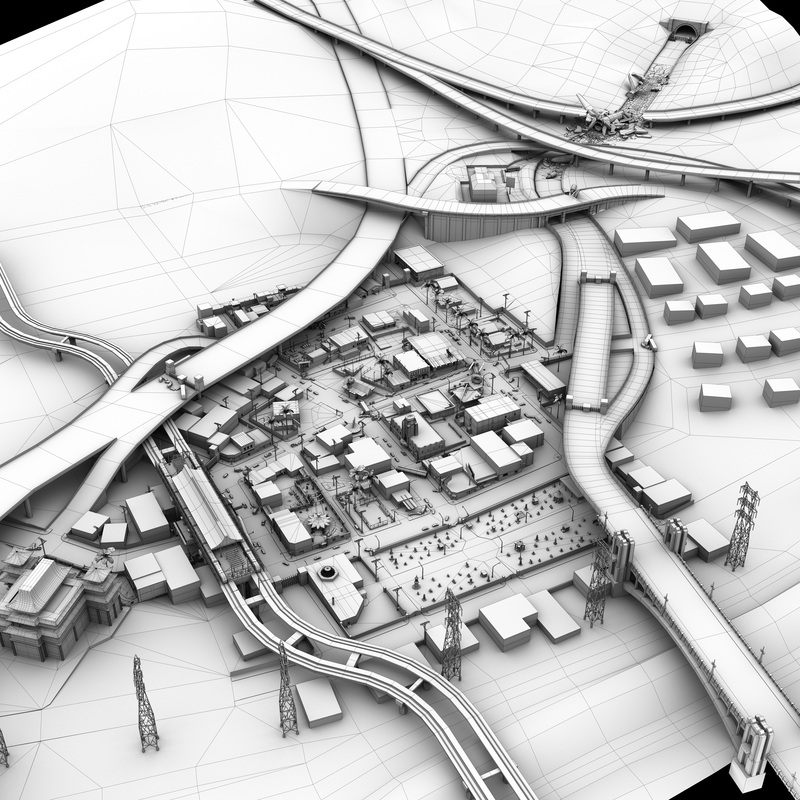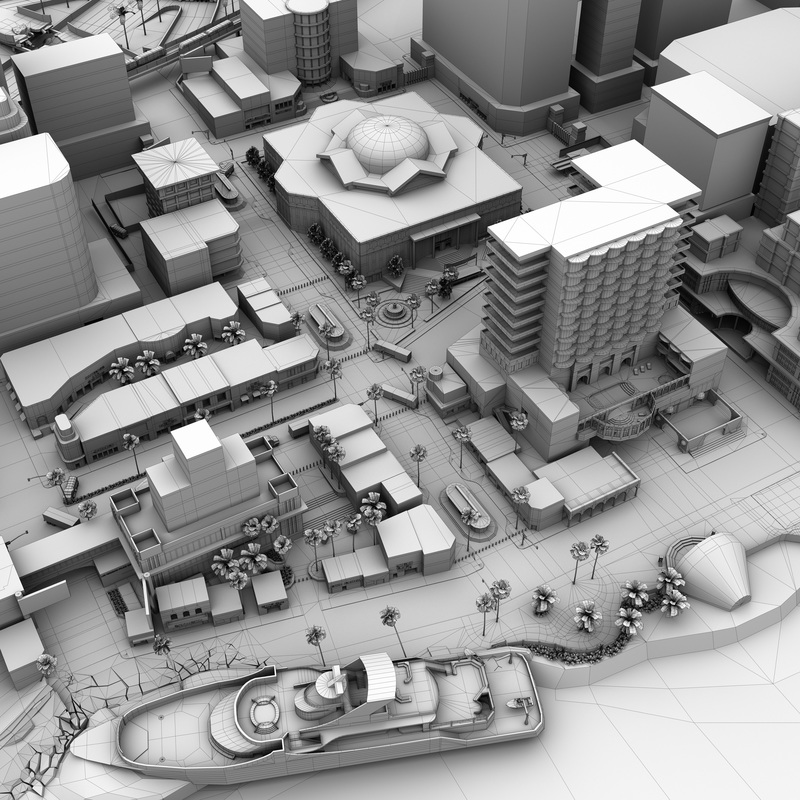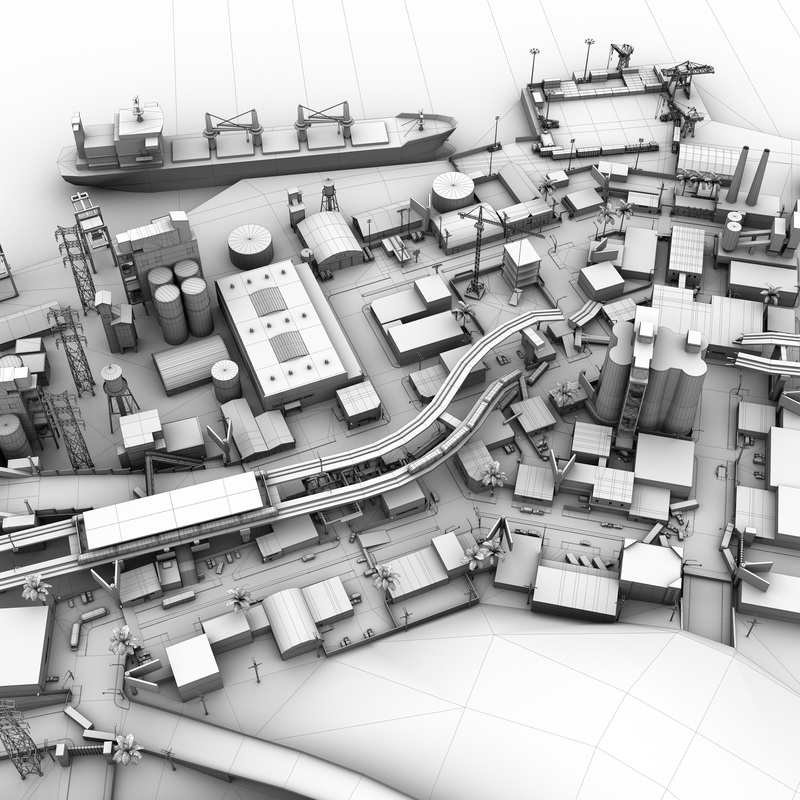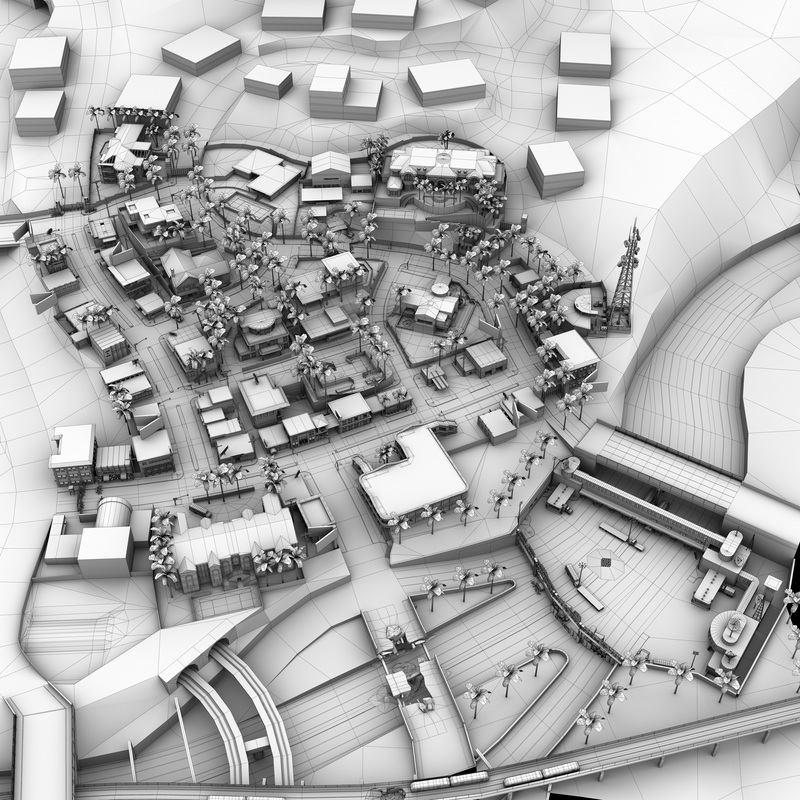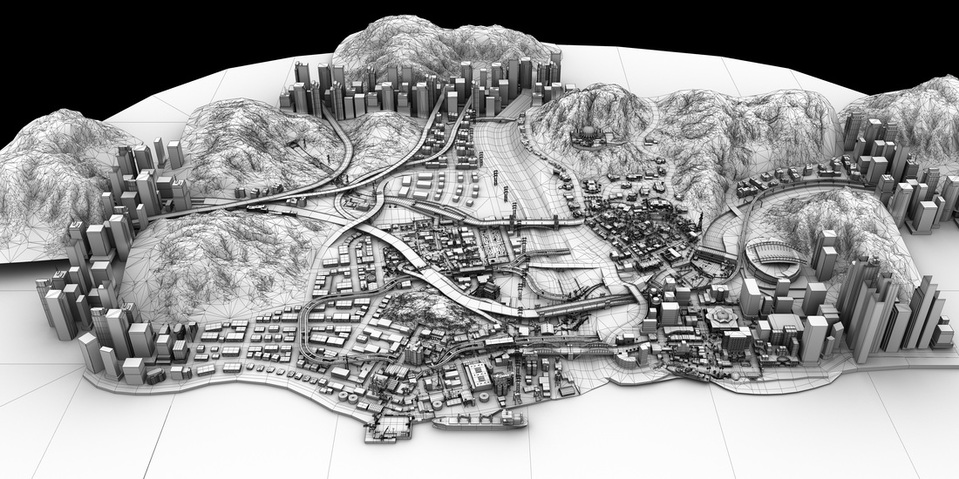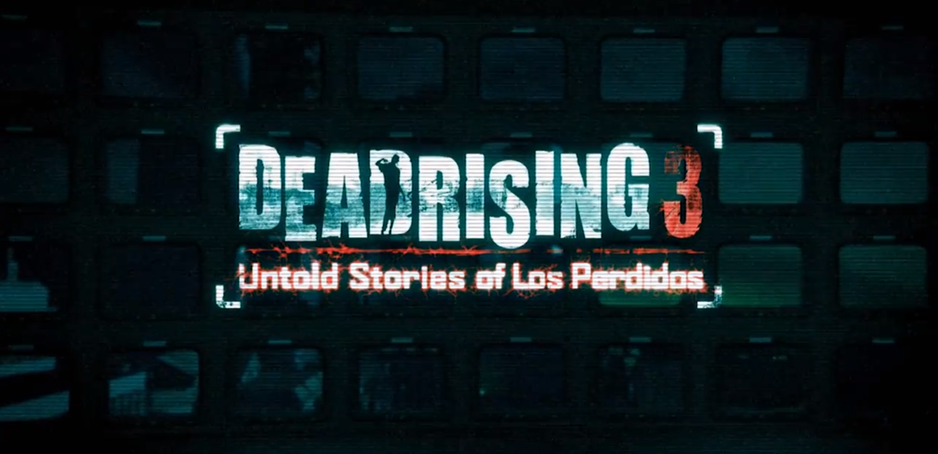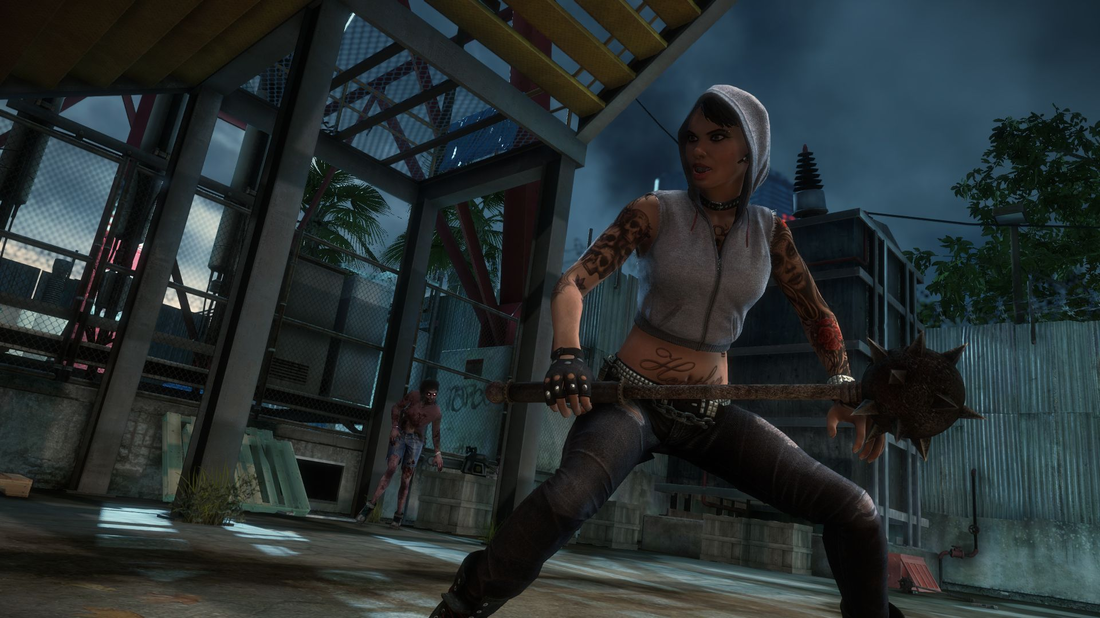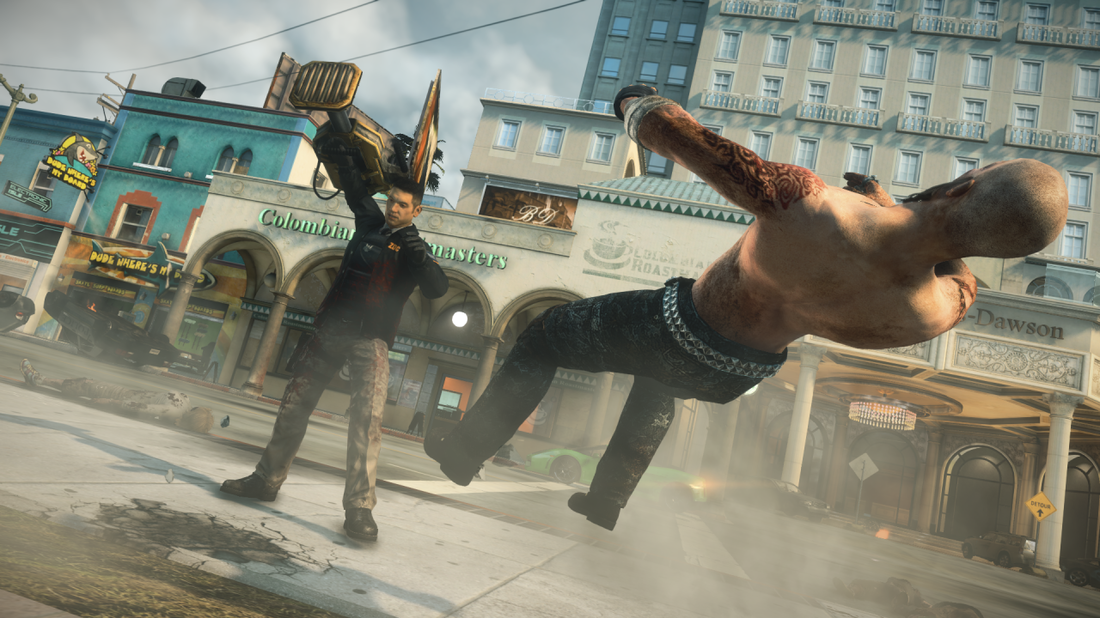Description of Work
- Created presentations explaining competitive products
- Acted as the world lead to develop overall plan for world through design documents, stories, design briefs, and of course, building grey-block environment, which included designs for audio, animation and vfx
- Directly managed 2 Level Designers
- Was the main point of contact for all cinematic locations and world vfx
- Gave Regular feedback, inspiration, motivation and mentorship to all developers relying on world design
- Gave regular team presentations on world development
- High level world and mission design and planning
- Detailed world and mission design briefs
- World grey block implementation
- High level content and placement planning
- Content and placement implementation
- Developed all player, vehicle and world metrics with the representatives in the gameplay department
- Wrote best practice documents for Level Designers
- Created and managed schedules with project managers/producers
- Fed back on the intelligence of player metrics and data reports
- Used data reports to make adjustments to world and mission content
- Worked with Technical Artists and engineers to create tools to gather technical metrics for the game to tune data for streaming
- Worked with Engineers to improve the interface and technology of Forge, Capcom Vancouver's internal development engine
The Inception of Dead Rising 3
Before Dead Rising 2 hit the shelves, Dead Rising 3 seemed like a no-brainer. Dead Rising 2 went on to sell about 3.5 million copies worldwide, which was more than twice what Dead Rising sold. Granted Dead Rising was an Xbox 360 only title, but that also paved the way for what would eventually take place with Dead Rising 3's development.
The project started with team-wide brainstorm sessions to get a broad spectrum of ideas, and then downsized to the key development staff: Josh Bridge, Kevin Scherbey & Annie Reid. I worked with them to develop ideas for the story, missions and world content in the game with my focus being on world. Together we focused our collaboration on the story elements first, and went through several drafts and final drafts before getting an approval.
From here, we each had to begin to focus on our own areas of development.
The project started with team-wide brainstorm sessions to get a broad spectrum of ideas, and then downsized to the key development staff: Josh Bridge, Kevin Scherbey & Annie Reid. I worked with them to develop ideas for the story, missions and world content in the game with my focus being on world. Together we focused our collaboration on the story elements first, and went through several drafts and final drafts before getting an approval.
From here, we each had to begin to focus on our own areas of development.
In The Beginning
The new direction for the series was mostly based around the player's ability to drive, and driving meant a much bigger world. It was also becoming a requirement - and let's face it - it's fun to plow down Zombie's with your car...and to have to face the problem of it being destroyed or running out of gas.
This change in the focus of game play space meant my first order of business would be to determine a new set of metrics for driving. Since this was an afterthought with the simple driving experiences in DR2, it required an entirely new way of thinking. Everything from distance, turning, max vehicle speed, curb height, smack-able objects, garage doors, etc, etc, needed to be accounted for in the design. Beyond that, different roads needed to feel different to the Player, not only to better landmark locations, but also to provided different scenarios. For example, on the Freeway it felt wide and open, with plenty to explore should you end up there on foot. It ended up creating fast paced zombie mowing experiences, and holy sh!t moments, when you crash a vehicle and find yourself surrounded. In contrast, the alleyways were much tighter and provided a hectic driving experience that required smaller vehicles like the fork lift in South Almuda and Motorcycles in Ingleton. Being on-foot in the alley's allowed for creepy feelings, and situations of hopelessness with nowhere to go if you found yourself unprepared.
Additionally, the player metrics for being on-foot also needed to be smoothed out, as the rigid animation of Chuck Greene was criticized by many reviews of DR2. The revision of these metrics and the inclusion of a new set of metrics for driving resulted in a chunk of pre-production devoted exclusively to making the player's experience of world traversal a smooth one.
This change in the focus of game play space meant my first order of business would be to determine a new set of metrics for driving. Since this was an afterthought with the simple driving experiences in DR2, it required an entirely new way of thinking. Everything from distance, turning, max vehicle speed, curb height, smack-able objects, garage doors, etc, etc, needed to be accounted for in the design. Beyond that, different roads needed to feel different to the Player, not only to better landmark locations, but also to provided different scenarios. For example, on the Freeway it felt wide and open, with plenty to explore should you end up there on foot. It ended up creating fast paced zombie mowing experiences, and holy sh!t moments, when you crash a vehicle and find yourself surrounded. In contrast, the alleyways were much tighter and provided a hectic driving experience that required smaller vehicles like the fork lift in South Almuda and Motorcycles in Ingleton. Being on-foot in the alley's allowed for creepy feelings, and situations of hopelessness with nowhere to go if you found yourself unprepared.
Additionally, the player metrics for being on-foot also needed to be smoothed out, as the rigid animation of Chuck Greene was criticized by many reviews of DR2. The revision of these metrics and the inclusion of a new set of metrics for driving resulted in a chunk of pre-production devoted exclusively to making the player's experience of world traversal a smooth one.
The bible of Metrics for DR3. Click to download larger image. These were used to build a "metrics box" in maya that was used by many developers throughout the project to test their work.
Planning an LA-Inspired World
While the art crew was out in LA gathering photo reference with the Executive Producer, Josh Bridge, we continued to hammer on the story and develop missions and world in tandem. I designed and with the help of Keith Jensen built several road networks over a 2km² distance. I would quickly work out in 2d what the network would be, considering story, stores, mission and world content and keith and I would work together in Maya to block it all out. We reviewed every day amongst ourselves, checking timing of distances at speeds designated for gameplay, such as walking, running, driving slow, driving fast etc. I would quickly do it up in Photoshop or Illustrator, such as the image below:
In these early stages of development, we used google maps data to study the infrastructure of several areas of LA. We applied those learnings to our world, to give each of the districts a different feeling to experience in a vehicle or on foot.
It was my job to come up with an identity for each district of the world to match a play style. We knew early on that there would be at least 4 districts in the world, and each of these would require a majority set of specific weapons and vehicles to facilitate different play styles throughout the map. With input from my partner in crime: Keith Jensen, I put together several boards to show the intentions for the underlying forthcoming designs.
The 4 Districts
Central City - the downtown area of the game
Each board expresses a theme. The main theme of Central City is Greed. Having themes informed us about the stores and content that would be available to the player in each district, as well as how the player should feel while "shopping" in the district. Meaningful placement of missions led the Player to Stores and Weapons/Clothing and Survivors to have the experience of endless extravagance during an outbreak. There's nothing quite like running around in a Shark Suit with a Grenade Launcher and busting out onto the road with a Speed Demon's Sports Car, headed to South Almuda.
South Almuda - the industrial district of the game
South Almuda was filled with places to climb and much of the district could be traversed on rooftops, a good place to find escape from vertically challenged enemies and find some delicious secrets. The meeting being held at the Zip Gas Corporate Office prior to the outbreak gave the player access to the entire menu of drinks in the game, complete with an array of interesting weapon placements. A fun way to get to the Freeway or head North to Ingleton.
Ingleton - the low-end commercial suburb of the game
Ingleton, the darkest of the four districts carried the theme of dread. There was little refuge, but big payoff in the district. The layout of Zombies was made purposefully to almost always have the player under duress. Alleyways were good refuge, but the close quarters meant means of escape would also be thin. Having to travel this district on foot was difficult, unless you knew specific shortcuts and travelled from heavy duty weaponry to heavy duty weaponry. Plenty of guns at Headshots to combo with all kinds of blades at Shanks. A great way to stock up before heading East to Sunset Hills.
Sunset Hills - the rich commercial suburb of the game
The idea behind Sunset was Refuge. There's several large houses, and lots of food. I think maybe even Walter White may have lived there once! It was even possible to drive through the middle of the district almost right into the lot of Bite the Bull. It was also home to the biggest vehicle jump in the game, created by the explosion underneath Jason's House. Driving the outside ring of Sunset Hills is the quickest destruction-free route, which also makes for an easy stop and grab at Big Buck Hardware, conveniently located next to the Communications Tower, the base of the Resistance.
Outside the Districts
Freeways - built for driving and maximum speed
The Freeways were meant mainly for ease of driving, but depending on the durability of the vehicle, players could find themselves on foot and surrounded faster than they know what to do about it. Luckily there were things like the "mobile store" which was a collection of delivery trucks branded with popular stores in the game. These mobile stores allowed designers a perfect way to pace out the amount of weapons and food, as well as use the branding of stores to build the players memory and create memorable landmarks. There were also secret surprises in the way of the trucks of cars, which the player could open to find a weapon randomly generated from a list, which was set by a designer.
Vistas - Landmarking the City of Los Perdidos
The Vista was incredibly important, it gives the player large landmarks that are easily recognizable so they know which direction they're headed. This was important for Dead Rising 3 because the mix of driving and on-foot action could easily disorient the player. Having an iconic landmark to focus on made it easy to understand where you were going.
Building the World
We set to work on a plan for the world at the same time as the plan for the story and missions. The roads ebbed and flowed with our metrics and as the world was built. The problem with open world games is that they are open for the player to explore and experiment. The emergent design inherent in them is what creates such a unique experience for each player that can feel somewhat tailored to them. This is something that we tried to embrace with Dead Rising, but the Zombie factor made it difficult to fit into a rigid storyline.
Using the metrics we'd previously tested and approved, Keith and myself grey blocked the entire world one district at a time, staying ahead of the art team the entire way to waterfall the work. Much of the art in the game was sent for outsource, including the store branding, which yielded some fantastic results. This is one area that I chose to work closely on with Keith Lea, the artist handling the communication with the outsource team, Bonart. I would include metrics for dimensions, and give feedback about fonts, colors and architectural style to make sure that the branding was selling the gameplay content of the stores from a distance.
Final Dead Rising 3 map, with locations list
As I grey blocked the world I also had to plan out the content that would be placed in the world. This meant creating, and maintaining the running store list for the game, complete with store names and inventory. It was important to attain what was planned for each district with the store list, and also integral for the art team to adhere to it. This required a lot of artist interaction, feedback and suggestions going both ways.
Early store list in excel. Click for downloads
As the Dust Settled
Eventually as the dust settled on Missions and Story, we locked down the design changes on the world and we ahead full steam. The following video shows how things changed as the world continued to develop throughout pre-production. I directed my assistant, Keith Jensen, as he took on more of a level design role with a focus on player pathing. I owned Central City and Ingleton, while Keith owned South Almuda and Sunset Hills.
video montage showing the ebb and flow of world planning during pre-production
Final Grey Block of the 4 Districts
The completed Ingleton grey block, looking from the East. 38 Interior Locations.
Ingleton was the first district developed for Dead Rising 3. We spent the most time on it, since we developed things like metrics and missions in tandem. Several times, road networks needed slight rework to make missions possible. The sewer entrance at the start of Chapter 2 was never meant to lead to St. Keith's, but it became an interesting way to showcase the flashlight. The Flashlight was an afterthought, which I'd thought about while thinking of ways to get more mood into the game overall. This also led to the placed static police vehicles having real time lights. It breathed a sort of life into the environment that we had not previously achieved.
The completed Central City grey block, looking from the South. 39 Interior Locations.
An interesting fact about this area is that the Yacht featured along the beach was originally set to be the source of the outbreak and the first mission of the game. We had intended for it to be a celebrity yacht party, complete with a psycho battle. The Yacht originally had 3 floors, and was home to a night club, restaurant, passenger rooms, gambling area, pool area and more! We wanted it to crash into the beach during a cinematic to create a powerful outbreak moment of zombies shambling off into the core of Central City, Los Perdidos. Technical limitations prevented this from happening, but it didn't prevent us from including the crashed yacht in the game.
The Completed South Almuda Grey Block. 36 Interior Locations.
South Almuda was originally quite a bit bigger than it ended up being. It was the original test bed for our "Stronghold" mode, which consisted of 2-4 players in an area completing objectives. This mode eventually became Super Dead Rising 3, later on in development, so the Stronghold areas we had created: The Port in South Almuda, and The Hotel in Central City were sliced from the main games' development. Sadly for South Almuda, that meant losing the entire port, which had access to a giant shipping dock and freightliner.
Final Grey Block of Sunset Hills. 40 Interior Locations
Sunset Hills was one of the biggest design challenges because Dead Rising had never really featured fully explorable residential interiors. We quickly learned that they needed to be strung together and accessible in such a way that the Player could easily find paths to them and along the way discover secrets that would lead them to rooftops or secret passages, free from the hordes. Due to the complexity of the district both interior and exterior, Sunset Hills became the most expensive district to produce. Also, due to the footprint of enter-able locations it also made it the most difficult to stream.
Completed Grey Block of Los Perdidos
Final Grey Block of Los Perdidos. A whopping 156 interior locations. It look 3 level architects 20 months to design and complete
Adventures in Art
Over the next 9 months, the level designers hammered on adjustments that needed to be made for cinematics and missions, as the story had several amendments made to it. The game was set to be released in Feb 2012, and we were all working incredibly hard to make that happen...until one day we were all called into a meeting in which we got told that Microsoft wanted to partner with us and make Dead Rising 3 a launch title for the Xbox One. Wow. This impacted the game in a good and a bad way. First of all, everything that had been completed for art needed to be re-created at higher resolution, which was awesome for the visuals. It also gave us more memory to work with and a faster processor. We decided to open up several corners and ends of the world to make the driving experience better, now that we could stream more content at a faster rate. On the flip side, we also had to incorporate the new features of the Xbox One, and for us that meant supporting Kinect and SmartGlass. This resulted in an entirely new set of missions that required some world changes, and also an entirely new DLC plan.
However, in the end, we maintained the design vision of the game during the transition, and delivered the best product that we could with the tech that we had. Below are screen comparisons of the final grey block and the final art.
However, in the end, we maintained the design vision of the game during the transition, and delivered the best product that we could with the tech that we had. Below are screen comparisons of the final grey block and the final art.
Ingleton Grey Block vs Art Comparisons
Looking down the main strip towards South Almuda, between Shanks and Low Cost Luxury
Looking West towards the plane crash, between Ingleton Motel and Lee-Amies Estates
Looking East towards Sunset Hills, west of the main intersection across from Big Buck Hardware
Looking over St. Keith's Memorial Grounds
Looking North from between U Break Wi Fix and Flying Duck Travel Center
Central City Grey Block vs Art Comparisons
The West entrance to Central City
The South-East corner, looking West down the main strip
Along the main strip, looking North towards Sunset Hills
Center of the district, between the Museum of the Americas and The Burgess-Dawson Hotel
South Almuda Grey Block vs Art Comparisons
The entrance to South Almuda from the South Bridge looking West
The North-East entrance to South Almuda, looking West
The North entrance to South Almuda, looking South towards Warehouse C - 114
Center of the district, beside Annie's Old Fashioned XXX Supply,, looking East
Sunset Hills Grey Block vs Art Comparison
Looking South at the West entrance to Sunset Hills
Looking North towards the West exit, across from the Sunset Hill High School
Looking East, from between Los Perdidos Utility and Sunset Hills Metro Station
Looking North, at the Southern entrance to Sunset Hills
The DLC Episodes
The original plan for the DLC came in two packages: a Prologue similar to Dead Rising 2: Case Zero, and a 3 part Epilogue that would see each mainline series character star in his own episode. I preferred these and the stories that we wrote for them, but due to the exclusivity rights and the move to the Xbox One, the time and budget we required to make the original designs was gone. That leads us to where we landed: The Untold Stories of Los Perdidos.
Description of Work
- Presented direction for the Episodes to the team, explaining business case and competitive analysis
- Acted as the design lead to develop overall plan for Episodes
- Was the main point of contact for all cinematic locations and world vfx
- High level mission and dialog design and planning
- Detailed mission design briefs
- Detailed character design briefs
- Detailed weapon design briefs
- Content placement plan & implementation
- Directly managed small team of mission scripters, engineers, artists, animators and audio designers
- Participated in Voice casting and Voice Recording sessions
- Gave Regular feedback, inspiration, motivation and mentorship to all developers
From Dead Rising 3 to DLC
Before Dead Rising 3 was completely locked down, I was put in charge of DLC planning for 2 of 4 episodes. The budget was thin, the timeline was tight, and resources were still hammering on the main game. Regardless of that, this was one of the most fun parts of the project. The world had already been constructed, and all we had to do was create mission content. After a brainstorming session, the idea for "The Untold Stories of Los Perdidos" was born. It would eventually be 4 episodes, starring characters from the main game who never got a spotlight. It was literally up to me to choose who I wanted to star in the 2 episodes that I would direct. After speaking to the writer, Annie Ried, I decided that I'd like to explore what really happened to Angel, who was found dead upon arrival in the main line story, and finish up with Brad Park, who was a part of the Smart Glass missions in the game game.
After speaking to my partner Brian about the episodes he would be directing: one and three, and getting a good idea for the things he was looking to achieve, I set off in a slightly different direction. To keep the pacing of the DLC interesting, I wanted to focus on the characters themselves and what could make for some interesting mission content. I also wanted to wrap the new combo weapons into the scenarios of the game to give them a good grounding within what already existed. With the input from some key members of the team; Jamieson Shierer on Weapons, Phil on mission scripting/gameplay and Some of the early scripts had cool things going on, but due to technical difficulties and a lynch mob on the FPS capabilities of Xbox One, missions ended up rather static. At this point, I figured that the players that purchased DR3 at launch were most likely to buy the DLC because of boredom with the original content, if they liked the game and wanted more of it. Each DLC also brought forth new weapons and clothing as well, so co-op players looking for new toys would also likely buy it.
Understanding that the budget was limited, and there was almost zero budget for world changes, we did what we could with the restrictions we had. I knew that there were a few areas of the world that had not been used for missions in the main game, and this was a chance to have them exposed to the player.
Understanding that the budget was limited, and there was almost zero budget for world changes, we did what we could with the restrictions we had. I knew that there were a few areas of the world that had not been used for missions in the main game, and this was a chance to have them exposed to the player.
First up was Angel, in Episode 2: Fallen Angel. I liked that the player had not yet had the opportunity to play as a female character, and also that she was basically a corpse when you found her by the pool at the Burgess-Dawson Hotel. It meant that tying her story into the game could be interesting. Annie Reid suggested doing an episode that centered around the Illegals, which had yet to be explained. We had fun coming up with the gameplay and cinematics. From fighting through the swath of fireman zombies on the Yacht, to discovering the Illegals had been murdered in South Almuda to commandeering the Communications Tower and later ending up as a sacrifice for it all. We wrote dialog and in-game audio with a certain personality in ind, and then, when casting began for Angel's voice, we were lucky to have found such a perfect fit! If I could change anything about the episode, it would have been the character Art. I thought that Angel deserved more than ripped jeans and a hoodie, it just didn't fit the bill of a Capcom character. Unfortunately that wasn't my call, and we have to trust those in charge of their area to make the best decisions for the product.
The timelines were also especially short. Even though the episodes would be released one per month, all episodes had to be completed just after Christmas. They were constructed in just a few months of time. The first episode was delayed once, and released in January 2014. Fallen Angel was released the month after in February 2014.
The timelines were also especially short. Even though the episodes would be released one per month, all episodes had to be completed just after Christmas. They were constructed in just a few months of time. The first episode was delayed once, and released in January 2014. Fallen Angel was released the month after in February 2014.
The final and last episode: The Last Agent assumes that Nick saved Brad during the Smart Glass missions with the secret agent. When I started thinking about the episode I wanted the story to wrap up Los Perdidos and reveal the remaining truths about King Zombies and the outbreak in Dead Rising 3. I knew from the get-go that we were running on hot air with the team, and the technology wasn't going to improve for a final episode, so it would end up being more about the story than the gameplay. Perhaps the biggest challenge for The Last Agent would be the 3 episodes that preceded it. None of them had garnered an amazing metacritic, score with Episode 2 leading the pack.
It came to pass that Dead Rising: The Last Agent would end up being the final Dead Rising product I would put my name to. Unfortunately I can't talk about my work on the project that followed, as I departed from Capcom shortly after the initial block out of the world.
It came to pass that Dead Rising: The Last Agent would end up being the final Dead Rising product I would put my name to. Unfortunately I can't talk about my work on the project that followed, as I departed from Capcom shortly after the initial block out of the world.
